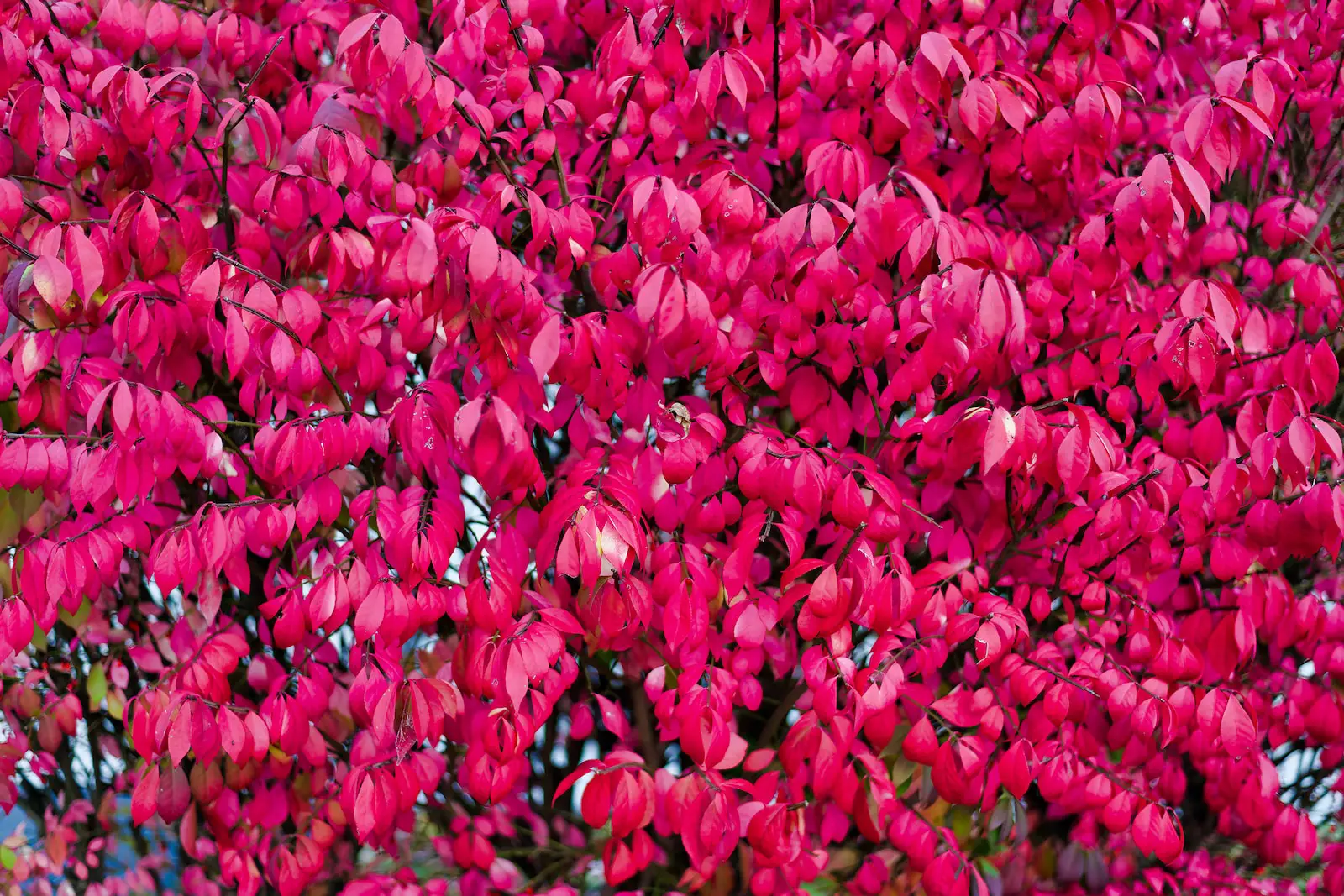The Burning Bush (Euonymus alatus), a popular deciduous shrub, is known for its vibrant red foliage during the fall months. This stunning transformation from green to blazing red gives the plant its fiery name and makes it a favorite among garden enthusiasts. Native to East Asia, the Burning Bush has been introduced to North America and Europe and is often found in gardens, parks, and landscapes.
While it offers spectacular visual interest, particularly in the autumn season, it’s worth noting that in some regions, the Burning Bush has been considered an invasive species. This is due to its ability to spread aggressively, which can sometimes crowd out native plants.
The appeal of the Burning Bush extends beyond its colorful leaves. With attractive, ridged bark, and small, yellow-green flowers that bloom in early summer, the plant provides visual interest throughout the year. Its hardy nature and adaptability make it a versatile choice for various garden settings and design themes.
| Attribute | Details |
|---|---|
| Common Names | Burning Bush, Winged Euonymus |
| Botanical Name | Euonymus alatus |
| Family | Celastraceae |
| Plant Type | Deciduous shrub |
| Mature Size | 6-10 feet tall and wide |
| Sun Exposure | Full sun to part shade |
| Soil Type | Adaptable to various soil types |
| Hardiness Zones | 4-8 |
| Native Area | East Asia |
Burning Bush Care
Caring for the Burning Bush is relatively simple due to its robust and adaptable nature. The plant thrives in various soil types and can endure different environmental conditions. A popular choice for borders, hedges, or standalone focal points, it can be grown both in containers and directly in the ground.
The keys to successful cultivation include proper site selection, adherence to watering needs, timely pruning, and prevention of potential diseases. With attentive care, the Burning Bush can grow into a stunning and dramatic addition to your landscape.
Light Requirement for Burning Bush
The Burning Bush performs well in full sun to part shade. While it can tolerate various light conditions, placing it in a location with ample sunlight will promote more vibrant fall coloration.
Soil Requirements for Burning Bush
This plant is highly adaptable to various soil types, including sandy, loamy, and clay soils. Ideally, the soil should be well-draining and can be slightly acidic to alkaline. Adapting to local soil conditions is one of the attributes that make the Burning Bush an accessible choice for many gardeners.
Water Requirements for Burning Bush
Watering should be regular, especially during the first growing season, to establish a deep root system. Once established, the Burning Bush is somewhat drought-tolerant and will require less frequent watering.
Temperature and Humidity
Burning Bush can adapt to various temperature ranges, thriving in hardiness zones 4-8. It does not have specific humidity requirements and can grow well in both humid and dry climates.
Fertilizer
Fertilizing is generally not required, especially if planted in rich soil. However, a balanced, slow-release fertilizer applied in early spring can promote growth if the soil is poor.
Pruning Burning Bush
Pruning can be done in late winter or early spring to maintain shape or reduce size. Regular pruning helps promote bushier growth and can prevent the plant from becoming leggy or overgrown.
Propagating Burning Bush
Propagation is usually done through softwood cuttings taken in late spring or early summer. Cuttings can be rooted in moist soil or a mixture of sand and peat.
How To Grow Burning Bush From Seed
Growing Burning Bush from seed can be a lengthy process. Seeds must be cold stratified for 90-120 days before planting. Sow seeds in well-draining soil and provide consistent moisture until germination.
Common Pests & Plant Diseases
Scale Insects
These pests can be controlled using insecticidal soap or horticultural oil.
Powdery Mildew
A fungal disease that can be treated with fungicides if necessary.
Common Problems With Burning Bush
Legginess
This occurs when the plant becomes too tall and spindly. Regular pruning can prevent this issue.
Invasiveness
In some areas, the plant may spread aggressively, becoming a nuisance.
Pro Tips
- Choose the planting location wisely, as the plant can spread.
- Utilize the Burning Bush’s vibrant fall color as a focal point in your landscape design.
- Regular pruning keeps the plant compact and bushy.
- Be aware of its potential invasiveness in certain regions and consider local regulations and native plant alternatives.




